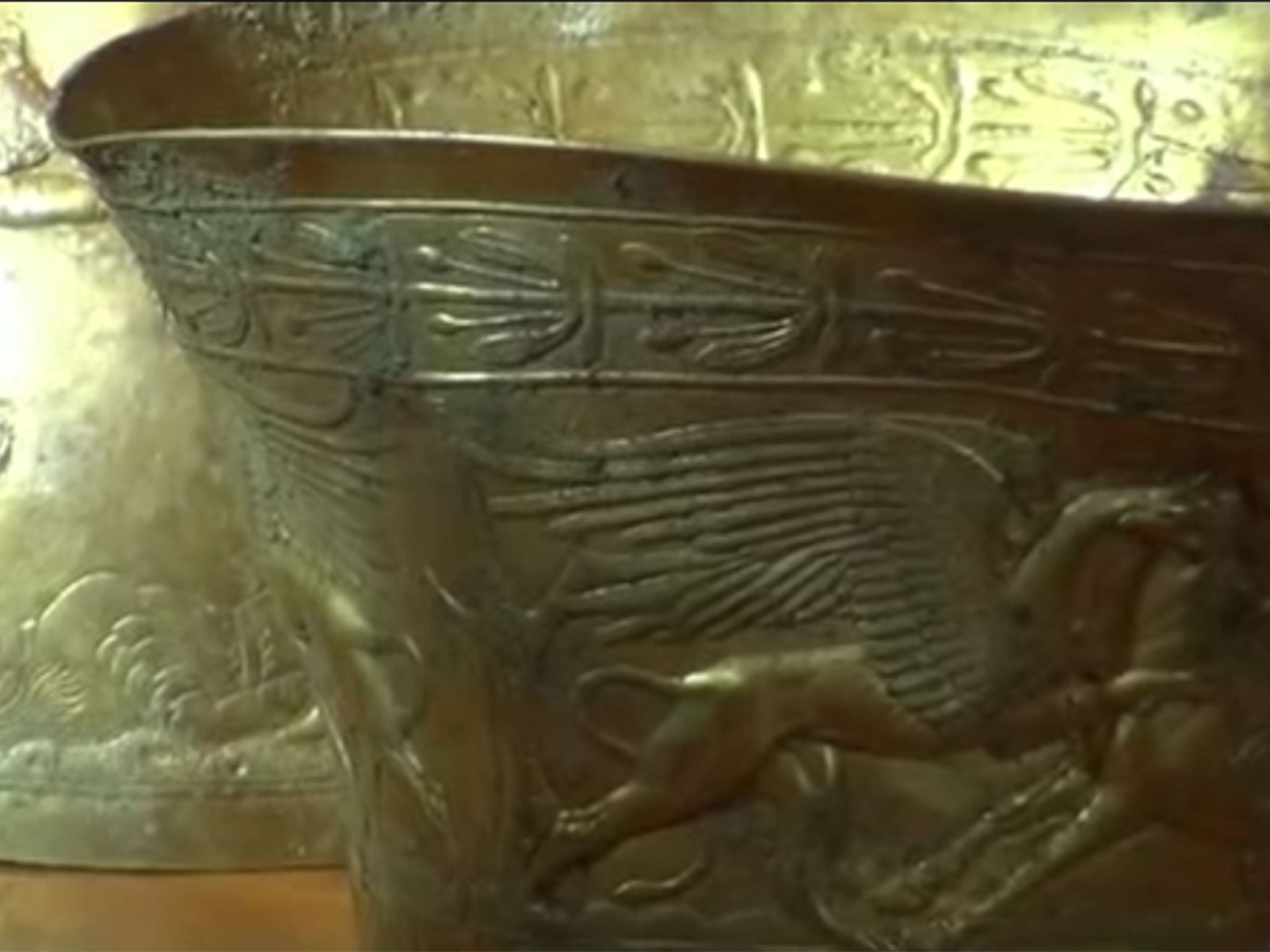The Independent's journalism is supported by our readers. When you purchase through links on our site, we may earn commission.
Ancient 2,400-year-old gold bongs discovered in Russia
The residue of opium and cannabis was found inside the bowls

The “once-in-a-century” discovery of a set of solid gold bongs has offered a glimpse into the little-understood lives of Scythians, who ruled vast areas of Eurasia for a thousand years 2,400 years ago.
Ornately embellished with depictions of humans and animals, archaeologists found the golden vessels in a vast grave mound in the Caucasus Mountains of southern Russia, where the Scythians ruled between 9th century BC and 4th century AD.
They were discovered inside a chamber lined with stones and hidden with clay, alongside 7lbs of other gold items, including a finger ring, two neck rings, and a gold bracelet, MailOnline reported.
Anton Gass, an archaeologist at the Prussian Cultural Heritage Foundation in Berlin, told National Geographic: “These are among the finest objects we know from the region.
"It's a once-in-a-century discovery," he said.
Analysis on a sticky black residue in the golden cups revealed the objects were used to hold a concoction of opium and cannabis, which mirror the writings of Greek historian Herodotus, who said: “Scythians used a plant to produce smoke that no Grecian vapour-bath can surpass which made them shout aloud.”
The bongs were discovered in 2013, as the burial ground, or kurgan, was cleared to make way for a power-line.
Experts hope the highly detailed scenes which decorate the objects - including an elderly bearded man killing young warriors and griffons attacking a horse and a stag – will shed light on Scythian culture.
Join our commenting forum
Join thought-provoking conversations, follow other Independent readers and see their replies
Comments